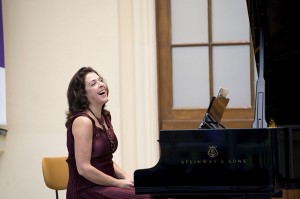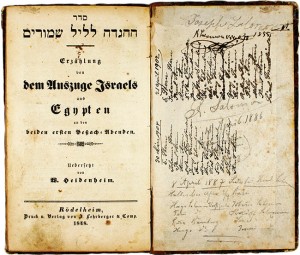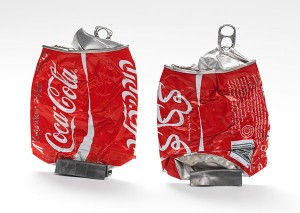An Interview with Elena Bashkirova
From 7 to 11 May, we will host a chamber music festival in the museum’s Glass Courtyard. Katharina Schmidt-Narischkin and Sylvia Winkler of our press office spoke in advance with the festival’s director Elena Bashkirova.
Press office JMB: As festival director, what themes have you chosen to emphasize this year?

Elena Bashkirova, festival director and pianist
© Monika Rittershaus
Elena Bashkirova: Our themes have been determined this year by two anniversaries: on the one hand, the start of the First World War 100 years ago and its impact on music; on the other hand, the 150th birthday of Richard Strauss. Both anniversaries augur a varied program for “intonations”: 1914 saw an astonishing richness of musical styles, which our concerts will reflect. And Strauss composed chamber music nearly his entire life, so I have a wide range of pieces and genres to choose from.
Every year at “intonations,” chamber music classics can be heard together with unknown works. What composers should visitors expect to discover in this third season?

David Robert Coleman, composer and conductor © private
Rudi Stephan was an extraordinary discovery for me. I heard Music for Orchestra and Violin a few years ago here in Berlin. I was impressed and deeply touched by it. As I was putting together the programs for “intonations,” I found his gorgeous chamber music and was delighted to have the chance to present it here with my colleagues. Rudi Stephan died in the war when he was 28. Given his talent, he would otherwise have certainly provided us with more outstanding music.
There will also be another world premiere: the fourth concert, on Saturday 10 May, will open with David Coleman’s “Three pieces for clarinet and piano.” Another significant composer this year will be Karol Szymanowski. He has his own tonal language, writing hauntingly beautiful music that unfortunately is played much too seldom. → continue reading
A Newly Acquired Passover Haggadah and Its Previous Owners in Kreuzberg
Next week, the first Passover Seder will be celebrated on the evening of April 14. All over the world Jews will gather with their family and friends around festively decked tables and partake in the centuries-old tradition of reciting the Haggadah. Its text describes the story of the Israelites’ liberation from slavery in Ancient Egypt and sets forth the order of the evening.

“An Account of Israel’s Exodus from Egypt on the First Two Evenings of Passover,” published in Rödelheim near Frankfurt, 1848
© Jewish Museum Berlin, photo: Aubrey Pomerance
A Haggadah in an online auction recently caught my eye, and I managed to purchase it for a negligible sum for the Jewish Museum Berlin. Published in 1848 in Roedelheim near Frankfurt under the title Erzählung von dem Auszuge Israels aus Egypten an den beiden ersten Pesach-Abenden (An Account of Israel’s Exodus from Egypt on the First Two Evenings of Passover), the book contains the Hebrew version of the Haggadah text, along with its translation into German by Wolf Heidenheim. It is the twentieth edition of the Roedelheimer Haggadah that first appeared in 1822/23, there with the German translation in Hebrew characters. In 1839, the translation first appeared in Roman letters, as is the case with our new acquisition.
There is, to be sure, nothing remarkable about this edition from 1848. → continue reading
A Conversation with Andrei Krioukov

Artistically-treated Coca-cola cans
© Jewish Museum Berlin, photo: Jens Ziehe
As a contribution to our art vending machine, Andrei Krioukov treated and crushed Coca-Cola cans with Hebrew and Arabic labels. I met him and his wife Rita at their art school on Immanuelkirchstraße in Berlin. This is where Andrei teaches international students, who both study and take their state-recognized exams with him.
In our discussion Andrei talks about his fascination with the design of the famous cans and explains the elements of both trash and art they represent.
Christiane Bauer: Andrei, what fascinates you about the Coca-Cola can?
Andrei Krioukov: These cans are typical of our lives today. You can find them everywhere, but hardly anyone notices them. For me, the discrepancy between art and trash is an exciting subject: if a can is lying on the street, it’s trash. But if I pick it up and contemplate it, and I ponder what I can do with it, it turns into art.
An artist from the 19th century could paint garlic, an onion, or a pitcher of water. Today our lives are full of Coca-Cola cans.
The pitcher appeared in still life paintings as an object from everyday life. What significance does the can have? Do you see a can of Coke as a disposable article or as a modern cultural artifact? → continue reading



